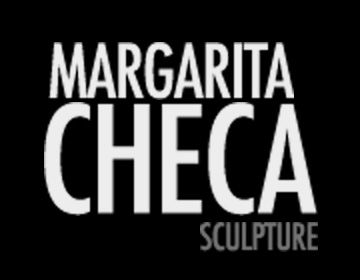Art Critic Carlos Rodriguez Saavedra
The history of art is an endless tapestry of creations, break offs, and assimilations. It is a fabric of significant forms, whose evolution and progress over the centuries depicts and conveys the spirit of each culture. And over its course and through its images, it also presents and expresses, in an aesthetic fashion, the riddles of the world and of human condition.
Margarita Checa’s art is not born of the intention ‑only too frequent today‑ of identifying herself with the latest novelty. It is, rather, the result of the interaction and confluent, within the spirit of this artist, of the major forces in the aforementioned process: innovation and tradition. The innovation is born of the artist’s need ‑imperative in Margarita Checa, as in every true creator of each period‑ to express through her approach and her vision her concept of the world and of existence. And the tradition is the living, active present of values that Nave remained impermeable to time and decay. In this way, her sculptures coherently and selectively convey her present and incorruptible experiences. And, at the same time, they contain echoes of ancient answers at the service of that expressive value. These works, then, are the living conjunction of that dual time frame in which we all live: the cultural and the personal. This later and fundamental dimension ‑a mixture fashioned, in this case, of tension, solitude and internalization‑ is what sets her work apart and intensifies the expressive content of each of her pieces, particularly those fashioned on a monumental scale, which is a characteristic of great sculpture. The principle of the work of art as an aesthetic vessel for an expressive content is revealed also in the formal treatment of her pieces. Margarita Checa carries her works from the wood of ancient olive trees and includes in some of her forms small inlays, in a subtle range of hues, of bullhorn. That is why, in short, if one of her largest pieces, for example, brings back echoes of Hellenism or evokes “mannerist” art or oriental or pre‑Spanish ornamentation, as one wishes, what really counts in these works, what has a truly profound impact on us, is not these formal or qualitative elements that Nave been taken on and placed at the service of her expression, but through them, the internal and dramatic relevance that comes out in each work. It is this impact ‑born of the burdens and tension of the soul, symbols of out time‑ that each one of the sculptures in this exhibition expresses with exemplary intensity.
Carlos Rodriguez Saavedra, eminent Art Critic.
Back
